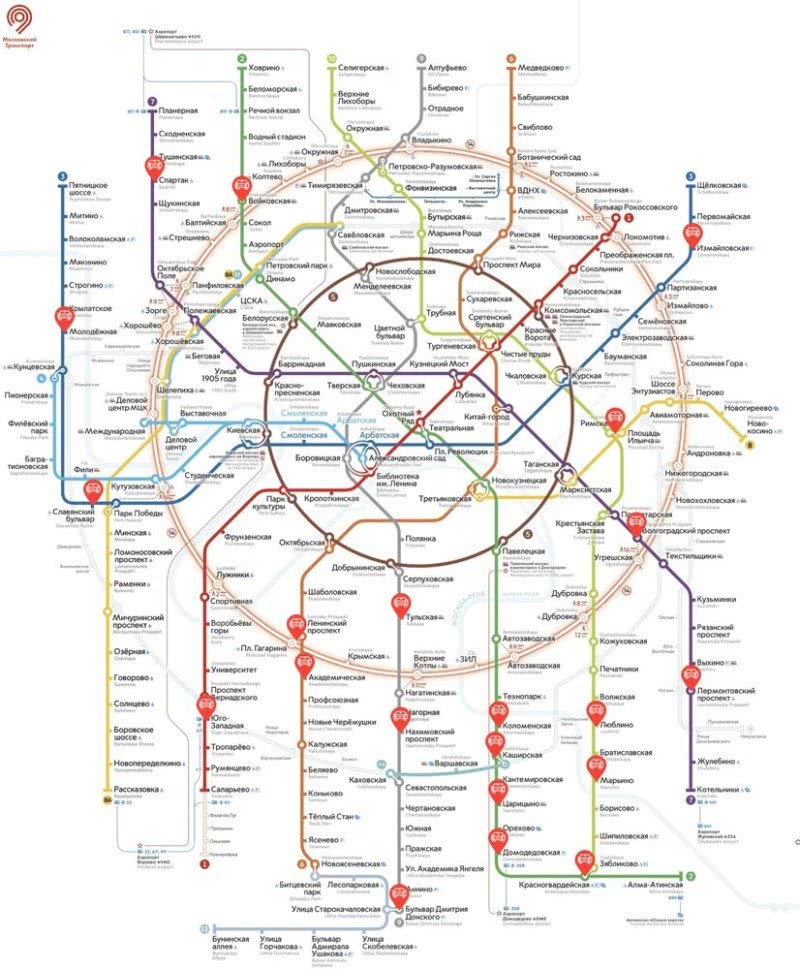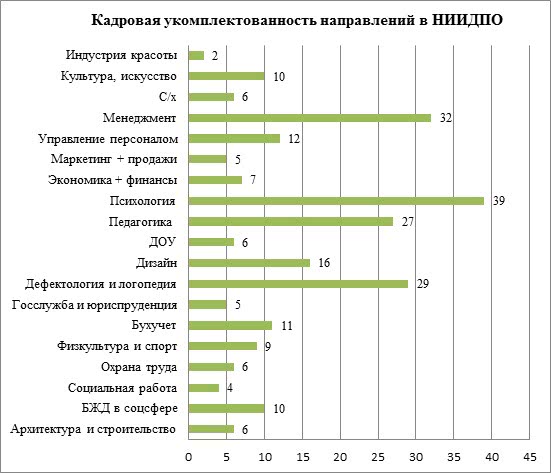Available programs
St. Petersburg School of Social Sciences and Area Studies
(6)
Political Science and World Politics
Sociology and Social Informatics
St. Petersburg School of Economics and Management
(6)
International Business and Management Studies
World Economy and International Affairs
(6)
HSE University and Kyung Hee University Double Degree Programme in Economics and Politics in Asia
HSE University and University of London Parallel Degree Programme in International Relations
Computer Science
(6)
HSE University and University of London Double Degree Programme in Data Science and Business Analytics
Graduate School of Business
(6)
HSE University and University of London Parallel Degree Programme in Management and Digital Innovation
International College of Economics and Finance
(6)
HSE University and University of London Double Degree Programme in Economics
Law
(21)
Law of International Trade, Finance and Economic Integration
St. Petersburg School of Social Sciences and Area Studies
(21)
Business and Politics in Modern Asia
Comparative Politics of Eurasia
Data Analytics for Politics and Society (St. Petersburg)
World Economy and International Affairs
(21)
Socioeconomic and Political Development of Modern Asia
Master of International Business
Economics, Politics and Business in Asia
Informatics, Mathematics and Computer Science
(21)
Mathematics (Nizhny Novgorod)
Computer Vision
International Laboratory for Applied Network Research
(21)
Applied Statistics with Network Analysis
Master of Data and Network Analytics
Mathematics
(21)
Mathematics (Moscow)
Management
(21)
Global Business
Social Sciences
(21)
Politics, Economics & Philosophy
Comparative Social Research
Applied Social Psychology
St. Petersburg School of Economics and Management
(21)
Management and Analytics for Business
Finance
Arts and Culture Management
International Business
Public Policy
(21)
Political Analysis and Public Policy
Graduate School of Business
(21)
Business Analytics and Big Data Systems
International Management
Vichnevsky Institute of Demography
(21)
Population and Development
Institute for Statistical Studies and Economics of Knowledge
(21)
Governance of Science, Technology and Innovation
Communications, Media and Design
(21)
International News Production
Critical Media Studies
Institute of Cognitive Neuroscience
(21)
Cognitive Sciences and Technologies: From Neuron to Cognition
Computer Science
(21)
System and Software Engineering
Math of Machine Learning
Data Science
Master of Data Science
International College of Economics and Finance
(21)
Financial Economics
Economic Sciences
(21)
Economics and Economic Policy
Strategic Corporate Finance
Master of Business Analytics
Humanities
(21)
Linguistic Theory and Language Description
Applied Linguistics and Text Analytics
School of Arts and Humanities
(21)
Global and Regional History
Institute of Education
(21)
Science of Learning and Assessment
Diversity & Internationalisation (25%)
This broad category attempts to understand to what extend a higher education institution is striving towards being as inclusive as possible, while promoting an environment that seeks to achieve UN Sustainable Development Goal 5: Gender Equality and Goal 10: Reduced Inequality.
Gender pay gap (2.5%)
One of the UN’s Sustainable Development Goals (SDGs) is to achieve Gender Equality through female equality in the workplace and the eradication of unfair practices targeting women. Unequal pay only further fuels gender-based discrimination in the workplace and must be tackled, first and foremost in the beacons of openness and tolerance that universities and colleges purport to be. The average weighted monthly salaries of both genders at professorial level only were compared within an institution, as it was assumed that there should be little discrepancy at this level.
Faculty gender diversity (2.5%)
This indicator is also used against the backdrop of the UN’s SDG to achieve Gender Equality. It aims to capture whether there is equal representation of both male and female employees within the faculty of a higher education institution. Institutions that are moving towards equal representation are demonstrating their commitment to progress towards achieving Gender Equality.
Ratio of undergraduate students receiving Pell grants (5%)
This indicator focuses on the percentage of enrolled undergraduate students that were awarded a Pell grant. The Pell grant programme provides grant assistance to eligible undergraduate postsecondary students with demonstrated financial need to help meet higher education expenses.
Students’ ethnicity mix (5%)
The student fabric of a higher education institution is an important indicator that reflects its openness and attention to nurture a diverse, culturally sensitive and tolerant student cohort. An institution with a diverse student ethnic mix demonstrates it cultivates inclusiveness and promotes social mobility, while offering its students a diverse student learning experience crucial in today’s global world. It should also be understood against the backdrop of SDG 10: Reduced Inequality.
Number of Fulbright recipients per institution (5%)
This indicator looks at which US institutions are top producers of US Fulbright students over a combined period of 3 years. The Fulbright Programme is the US government’s flagship international educational exchange programme and is sponsored by the Bureau of Educational and Cultural Affairs of the United States Department of State. Since its inception in 1946, the Fulbright Programme has provided more than 390,000 participants—chosen for their academic merit and leadership potential — with the opportunity to study, teach and conduct research, exchange ideas and contribute to finding solutions to shared international concerns. In the United States, the Institute of International Education administers and coordinates activities relevant to the Fulbright Student Programme on behalf of the US Department of State.
Proportion of international students (5%)
A highly international university acquires and confers several advantages. It demonstrates an ability to attract students from across the world, which in turn suggests that it possesses a strong international brand.
Research (28.5%)
This category is designed to demonstrate how the research of a higher education institution is having an impact. It focuses on the quality of the research, regardless of the size of an institution, and how open and internationally collaborative its research outputs are, whether within academia or with industry.
Academic reputation (13.5%)
Academic reputation is measured using a global survey, in which academics are asked to identify the institutions where they believe the best work is currently taking place within their own field of expertise. The survey collates the expert opinions of over 94,000 individuals in the higher education space. It has grown to become the world’s largest survey of academic opinion, in terms of size and scope, and is an unparalleled means of measuring sentiment in the academic community.
Citations per paper (7%)
Citations per paper focuses on the performance of the papers an institution produces that are actually indexed in Scopus. It assesses the number of citations per research paper published, aiming to give an idea of the impact each institution’s research is having within the research community
International Research Network (IRN) (5%)
This indicator assesses the degree of international diversity in terms of research collaboration for each evaluated institution. The Margalef Index, widely used in environmental sciences, has been adapted to estimate the richness of the selected international research partners for a given institution.
Partnerships with Employers per Faculty (3%)
What makes a university eligible to be considered?
To be eligible for inclusion in the QS World University Rankings, a university must teach at multiple study levels (i.e. both undergraduate and postgraduate), and conduct work in at least two of five possible faculty areas (arts and humanities; engineering and technology; social sciences and management; natural sciences; life sciences and medicine).
Similar criteria apply for the Times Higher Education ranking: institutions are excluded if they do not teach at undergraduate level, or if their research output falls below a certain threshold. ARWU considers all universities with Nobel laureates, Fields Medal recipients, highly cited researchers, papers published in Nature or Science, or a significant number of papers indexed in the Science Citation Index or Social Science Citation Index.
How much importance should I place on rankings when choosing a university?
The amount of importance you give to the rankings is up to you and your personal preference. This will largely depend on how far the criteria used to create the rankings match your own priorities, and how keen you are to study at a highly ranked university. Based on our own research, we’ve found that many students use rankings as a quick way to check the reputation of a university, while many also believe rankings can provide a rough gauge of educational quality, alongside other sources.
Although the rankings can be a useful tool, you should never base your university choice entirely on the results, as statistics can’t give you the full picture of what it’s actually like to study at a university. After consulting the rankings, it’s recommended that you spend time researching the university’s location and ethos, student life and course content – as well as checking the admission requirements and costs. You might find that a university which is not so highly ranked (or not ranked at all – see below), is the best fit for you and your particular circumstances and priorities.
Citations per faculty
A measure of the quantity of research being produced by a university, citations per faculty allows institutions with a strong analytical focus to shine.
Of the five universities to score a perfect 100 this year, only Caltech is a recognizable name from our overall top 10. Princeton University and the Georgia Institute of Technology (Georgia Tech) are also based in the US, while the other two universities are from India and South Korea.
The Indian Institute of Science (IISc) Bangalore has dropped 14 places overall this year to 184th but continues to enjoy a strong research output. It performs best in the QS World University Rankings by Subject for chemical engineering and materials science, suggesting those two areas are likely to be the focus of much of the institute’s leading research.
The Gwangju Institute of Science and Technology (GIST) has also underperformed this year overall, falling seven places to joint 322nd. It also performs well in our subject rankings for materials science, so anyone interested in this subject area has two intriguing, more obscure universities which they may want to consider applying to.
Top Universities in Asia

305 Asian schools are found in the QS World University Rankings this year.
The highest ranked university is found in Singapore in Southeast Asia: the National University of Singapore (NUS), placing in 11th place worldwide and earning its highest score in the academic reputation indicator.
Southeast Asia claims a total of 60 universities this year. Malaysia has the most ranked schools in Southeast Asia with 22; followed by Indonesia with 16.
Most of Asia’s universities are in East Asia, where 179 universities can be found. Mainland China’s performs the best, ranking in 17th.
South Asia claims 52 schools and is dominated by Indian institutions. Of these, India’s Indian Institute of Technology Bombay (IITB) earns the highest score, in joint 177th globally.
Lastly, Central Asia has 14 entries. Its highest ranked university is Kazakhstan’s in 175th.
Why are universities sometimes listed in a different order in other ranking tables?
This is caused by the different methodologies used to compile each ranking. You may even find there are variations in the results published by a single organization. QS uses slightly different methodologies for the overall world rankings, subject rankings and regional rankings – which can mean these place universities in a different order.
As an example, is South Korea’s highest-ranked in the QS World University Rankings (at 37th), but is ranked higher in the QS Asia University Rankings 2021.
This is due to the different methodologies used to compile these rankings, and clearly gives you an idea that these particular institutions are quite neck and neck with each other.
Do you have any questions that we didn’t cover here? Let us know in the comments below, ask a question on or , or ask a question in our student forum. To read about the QS World University Rankings in more detail, visit the QS Intelligence Unit’s website.
Employer reputation
This indicator functions in much the same way as academic reputation, only it’s based on the opinions of some of the top employers around the world. Looking at this indicator in isolation, we can see which universities you should want to be able to list at the top of your CV.
Only six have managed a perfect score of 100 this year, five of which also scored 100 with academics. The sixth, CentraleSupélec, is ranked 139th in the world and is only the fourth best university in France. This poor overall performance is the result of poor academic reputation, suggesting the newly-founded institution (it was established in 2015) is still yet to earn notice for its research and teaching.
Employability (24.5%)
This category is designed to look at the employment prospects of students graduating from US higher education institutions, through metrics that include the results of our Employer Reputation Survey, Alumni outcomes and salary post-graduation.
Employer reputation (10%)
Students will continue to perceive a university education as a means by which they can receive valuable preparation for the employment market. It follows that assessing how successful institutions are at providing that preparation is essential for a ranking whose primary audience is the global student community.
Our Employer Reputation metric is based on almost 45,000 responses to our QS Employer Survey and asks employers to identify those institutions from which they source the most competent, innovative, effective graduates. The QS Employer Survey is also the world’s largest of its kind.
Alumni outcomes (10%)
QS has been recording the educational background of over 30,000 highly influential employers, sector leaders, and award-winning professionals, as well as individual
professionals both senior and junior. The aim is to rank which universities are proving themselves as sources of successful employees and employers and can claim to have positively influenced their alumni’s development. The criterion is based on the fact that universities with strong track records in this field will have the kind of high-quality alumni networks that provide students with connections, career advice, and internship/ work placement opportunities – all of which boost employability.
Salary after 10 years (4.5%)
This indicator looks at the average salary of graduates that received federal financial aid, 10 years after first entering university.
Top Universities in Europe

Europe claims a total of 492 schools in this year’s QS World University Rankings.
The majority of these are found in Western Europe, which counts 251 universities including the highest ranked European school, the UK’s University of Oxford, ranking second globally.
Eastern Europe has 134 schools in the index. Most of these are in Russia, including the highest ranked school in Eastern Europe, Lomonosov Moscow State University ranking 78th. Southern Europe claims 81 institutions, led by Italy’s in 142nd place.
Scandinavia is home to 26 ranked universities this year, led by Denmark’s University of Copenhagen in joint 79th.
Master’s in Legal Theory student, Jim Onyemenam, attends the global top 10 UK school, UCL. He said: “UCL is a very international university and I met people from all over the world which really broadened my perspective on life. I also developed my hobbies and passions a lot more through the student societies which made my experience well-rounded.”
I can see that this university is ranked 501-510. What is its exact ranking?
In the QS World University Rankings, only the top 500 institutions are given individual ranking positions (the same applies to the top 200 in the Times Higher Education ranking). After this, the universities are grouped into bands, starting from 501-510 in the QS ranking and continuing until 801-1000.
Precise ranking positions are not published, due to the difficulty of accurately differentiating at this level. If you do want more in-depth information about the university, click on its name in the ranking table – this will bring you to a profile page, where you’ll be able to see if it appears in any of the regional or subject rankings. It may also have been evaluated through the QS Stars rating service, which provides an in-depth assessment of university performance in eight categories. You could also search online for a national ranking of universities in your chosen study destination.
Are the world university rankings biased towards English-speaking universities?
It’s easy to think this could be the case, due to the large numbers of universities from Anglophone countries (particularly the US and UK) at the top of the rankings. However, there is no deliberate bias towards English-speaking institutions, and indeed the rankings organizations are committed to making the rankings as fair and accurate as possible. In 2015, for example, QS improved the way in which research citations are assessed, to balance out an existing bias in favor of science-focused institutions. In an attempt to provide greater visibility to universities outside of the nations which typically dominate the tables, QS also publishes regional rankings for Asia, Latin America, the Arab region, Emerging Europe and Central Asia (EECA) and the BRICS countries.
Learning experience (22%)
This category aims to reflect the overall learning environment provided by a higher education institution to its students, through the level of support it offers all its students
regardless of background, as demonstrated through metrics with regard to retention rate, teaching spending and graduation rates of students with and without federal financial support.
Average instructional expenditure per FTE student (10%)
Average teaching spending per FTE student demonstrates how much financial resources a higher education institution spends on average on teaching per student. This indicator is used as a proxy to determine how strongly an institution is committed to offer the most effective learning environment possible.
Retention rate (5%)
A measure of the rate at which students persist in their educational programme at an institution, expressed as a percentage. For four-year institutions, this is the percentage of first-time bachelors (or equivalent) degree-seeking undergraduates from the previous fall who are again enrolled in the current fall. For all other institutions this is the percentage of first-time degree/certificate-seeking students from the previous fall who either re-enrolled or successfully completed their program by the current fall.
Pell grant student graduation rates compared with other students (3.5%)
This indicator focuses on how well an institution supports students in financial need that were awarded a Pell grant recipient in graduating within 150% of normal time to programme completion, compared to the average graduation rate for students that did not receive a Pell grant or Stafford loan.
Student-faculty ratio (3.5%)
Teaching quality is typically cited by students as the metric of the highest importance to them when comparing institutions. It is notoriously difficult to measure, but we have determined for this exercise that measuring student/faculty ratios is the most effective proxy metric currently available. This indicator assesses the extent to which institutions are able to provide undergraduate students with meaningful access to faculty members and recognizes that a high number of faculty members per undergraduate student will reduce the teaching burden on each individual academic.
International faculty and international students
These two indicators both measure how international a university is, something which we consider to be an important factor, particularly for anyone looking to study abroad.
Around 50 universities achieved a perfect score for at least one of these indicators, suggesting there are plenty of places where international students will feel more than welcome. There’s a fantastic level of international diversity at universities all over the world, from the United Arab Emirates to Australia, France and even Saudi Arabia.
Interestingly, only 10 universities achieved a perfect score in both of these indicators and none of these are from the US. The UK is represented three times, by Imperial College London, the London School of Economics and Political Science (LSE) and SOAS, University of London. Clearly – despite anxieties about Brexit – London remains thoroughly open to international students.
Faculty: student ratio
A whopping 20 universities achieved a perfect score for their ratio of faculty members to students this year, showing more institutions are recognizing the benefits of small class sizes and personal contact with tutors. Only 19 universities managed this feat in last year’s ranking.
A wide range of universities are among the 20 this year, with Japan, Italy, France, Russia and Denmark all represented. While five of the institutions achieved an overall finish in the top 10, others are far more obscure. Wake Forest University in the United States is the lowest-ranked university to score 100 for its faculty to student ratio, having dropped 11 places to joint 398th.
How are universities assessed?
This varies depending on the ranking – and it’s advisable to always consult the methodology when considering the results. The QS World University Rankings assesses universities using six performance indicators, which each carry a different weighting when calculating overall scores. These indicators are academic reputation (40%), employer reputation (10%), student-to-faculty ratio (20%), research citations per faculty member (20%), proportion of international faculty (5%) and proportion of international students (5%). The Times Higher Education ranking uses a total of 13 performance indicators, including some, but not all of the same indicators used by QS, and applies slightly different weightings when calculating the final scores. The ARWU ranking has a stronger focus on research performance, and also considers factors such as the number of staff and alumni who have received Nobel Prizes and Fields Medals.
Why isn’t my university featured in the world university rankings?
There are tens of thousands of universities in the world and unfortunately, it’s simply not possible to rank every single one of them. It’s important to remember that even making it to the lowest level of the world university rankings is a great achievement, putting an institution within the top two to five percent worldwide. If an institution isn’t featured, this doesn’t mean it’s ‘bad’ – it just isn’t within this very top tier.
If you’re confused by the exclusion of a particularly prestigious institution, it may be that the university isn’t eligible for inclusion in the rankings, due to being too specialized, only teaching at one level, or not producing enough highly cited research (see above). Many of the schools that don’t feature in the overall world university rankings do get a chance to shine in the regional rankings and/or the subject rankings. For example, QS’s includes many specialized schools that are not eligible for inclusion in the overall rankings, but which excel in this particular field.
Academic reputation
Eight universities have all scored a perfect 100 for academic reputation in this year’s ranking, a measure of how the institution is perceived by other academics. Five of these are listed in the overall top 10 above (MIT, Stanford, Harvard, Oxford and Cambridge) but the other three are worth focusing on briefly.
The University of Tokyo is up one place to joint 22nd this year and continues to be the top university in Japan. Only three other institutions from Asia are ranked above Tokyo this year, cementing its reputation as one of the best places to attend university in the continent.
Our other two faultless universities with academics are not only both based in the US, they’re both based in California. The University of California, Berkeley (UCB) and the University of California, Los Angeles (UCLA) have both fallen in overall rank this year but continue to enjoy a healthy academic reputation, having also scored 100 for this indicator last year.





